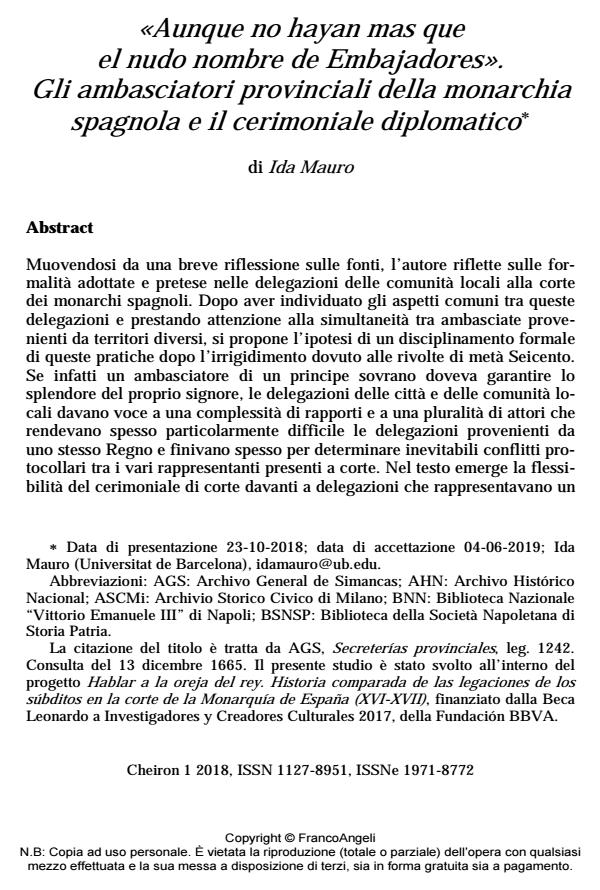«Aunque no hayan mas que el nudo nombre de Embajadores».
Journal title CHEIRON
Author/s Ida Mauro
Publishing Year 2019 Issue 2018/1
Language Italian Pages 25 P. 134-158 File size 173 KB
DOI 10.3280/CHE2018-001007
DOI is like a bar code for intellectual property: to have more infomation
click here
Below, you can see the article first page
If you want to buy this article in PDF format, you can do it, following the instructions to buy download credits

FrancoAngeli is member of Publishers International Linking Association, Inc (PILA), a not-for-profit association which run the CrossRef service enabling links to and from online scholarly content.
Provincial ambassadors of the Spanish Monarchy and the diplomatic ceremonial After a brief reflection on the sources, the author focuses on the formalities adopted and demanded in the delegations of the local communities at the court of the Spanish monarchs. The text tries to identify the common aspects among these delegations and pays attention to the simultaneity between embassies coming from different territories. Moreover, it proposes the hypothesis of a formal regulation of these practices after the midseventeenth century revolts. If an ambassador of a sovereign had to guarantee the splendor of his lord, the delegations of the cities and local communities gave voice to a complexity of relationships and a plurality of actors. Hence, dealing with different delegations of the same Kingdom was often particularly difficult and it sometimes ended up in inevitable protocollary conflicts between the various local representatives present at court. In conclusion, the author points out the flexibility of the court ceremonial in the managing of delegations that were an important instrument of government for a composite monarchy like that of the Spanish Hapsburgs.
Keywords: Naples; Messina; Michele Cavaniglia duke of San Giovanni; Filippo Cicala; Silvestro Fenga; Luigi Poderico
Ida Mauro, «Aunque no hayan mas que el nudo nombre de Embajadores». Gli ambasciatori provinciali della monarchia spagnola e il cerimoniale diplomatico in "CHEIRON" 1/2018, pp 134-158, DOI: 10.3280/CHE2018-001007